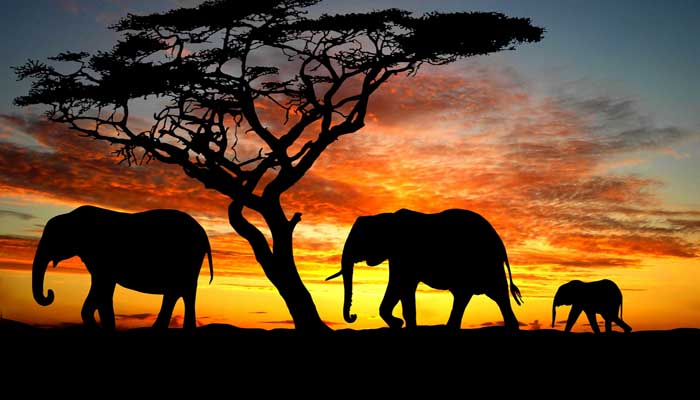
Most people in the modern world are only dimly aware of how our destinies are intertwined with those of wild creatures and natural resources. But science has revealed that modern humans are no less dependent on the natural world than ‘primitive’ societies. It has debunked the delusion of ‘human exceptionalism’: the idea that humans can somehow escape the constraints that nature imposes on other species.
African elephants were listed as vulnerable by the International Union for Conservation of Nature (IUCN) in 2008, with no independent assessment of the conservation status of the two forms.In 1979, Africa had an estimated minimum population of 1.3 million elephants, with a possible upper limit of 3.0 million. By 1989, the population was estimated to be 609,000; with 277,000 in Central Africa, 110,000 in eastern Africa, 204,000 in southern Africa, and 19,000 in western Africa. About 214,000 elephants were estimated to live in the rainforests, fewer than had previously been thought. From 1977 to 1989, elephant populations declined by 74% in East Africa. After 1987, losses in elephant numbers accelerated, and savannah populations from Cameroon to Somalia experienced a decline of 80%. African forest elephants had a total loss of 43%. Population trends in southern Africa were mixed, with anecdotal reports of losses in Zambia, Mozambique and Angola while populations grew in Botswana and Zimbabwe and were stable in South Africa. Conversely, studies in 2005 and 2007 found populations in eastern and southern Africa were increasing by an average annual rate of 4.0%. Due to the vast areas involved, assessing the total African elephant population remains difficult and involves an element of guesswork. The IUCN estimates a total of around 440,000 individuals for 2012.
In 2008, the IUCN listed the Asian elephant as endangered due to a 50% population decline over the past 60–75 years while CITES lists the species under Appendix I. Asian elephants once ranged from Syria and Iraq (the subspecies Elephas maximus asurus) to China (up to the Yellow River) and Java. It is now extinct in these areas, and the current range of Asian elephants is highly fragmented. The total population of Asian elephants is estimated to be around 40,000–50,000, although this may be a loose estimate. It is likely that around half of the population is in India. Although Asian elephants are declining in numbers overall, particularly in Southeast Asia, the population in the Western Ghats appears to be increasing.
The use of elephants in circuses has also been controversial; the Humane Society of the United States has accused circuses of mistreating and distressing their animals.In testimony to a US federal court in 2009, Barnum & Bailey Circus CEO Kenneth Feld acknowledged that circus elephants are struck behind their ears, under their chins and on their legs with metal-tipped prods, called bull hooks or ankus. Feld stated that these practices are necessary to protect circus workers and acknowledged that an elephant trainer was reprimanded for using an electric shock device, known as a hot shot or electric prod, on an elephant. Despite this, he denied that any of these practices harm elephants. Some trainers have tried to train elephants without the use of physical punishment. Ralph Helfer is known to have relied on gentleness and reward when training his animals, including elephants and lions. In January 2016, Ringling Bros. and Barnum and Bailey circus announced it would retire its touring elephants in May 2016.
A campaign #DontLetThemDisappear has been launched by Amarula in partnership with WildlifeDirect, a Kenyan NGO. The global demand for ivory is still the principal driving force pushing elephants to the brink of extinction. First, care for the natural environment should be understood as a moral duty, as it was by our ancestors for whom rivers, trees and animals were sacred. Desecrating them was a sin.
The sole reason for wildlife existence cannot be tourism or money. Animals are more important as custodians of our wildlands. Cities such as Nairobi and Cape Town depend on protected areas for their water supply. Wildlands support Africa’s agriculture in many ways supplying water, pollination, soil protection and pest control. These are the deeper existential stories we should emphasise.

Post Your Comments